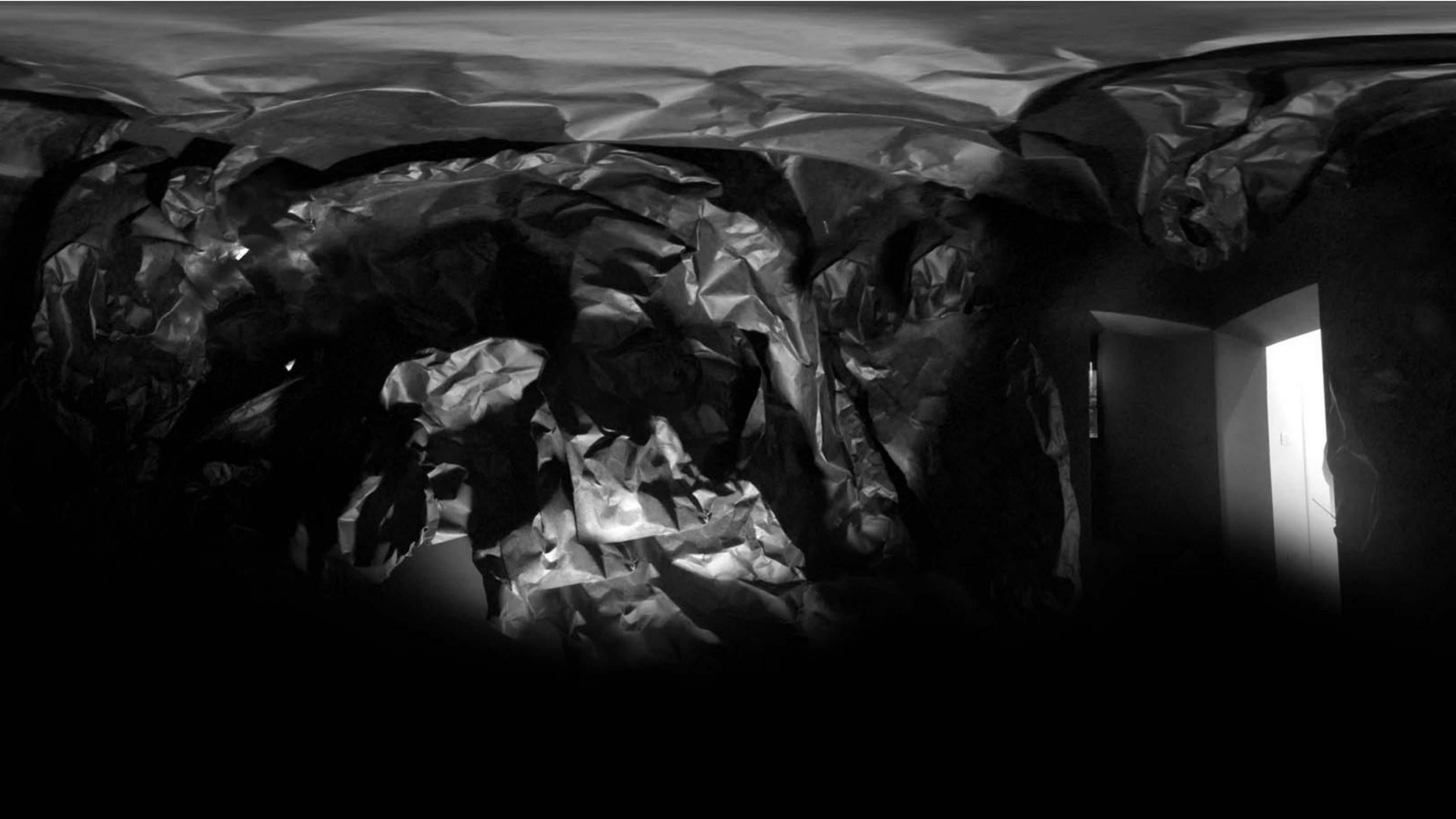Redrawing architecture and landscape at the Venice Biennale
School of Architecture’s Dr Simon Twose has an installation, Canyon, on display in this year’s Venice Biennale, one of the world’s most prestigious architectural events.
An abstracted piece of New Zealand is on display in a famous international architecture exhibition in Italy, the XVI Venice Architecture Biennale. The multimedia installation Canyon is a collaboration between Victoria University of Wellington’s Dr Simon Twose, Professor Jules Moloney (Deakin University, Melbourne) and Associate Professor Lawrence Harvey (RMIT University, Melbourne). The installation stems from Dr Twose’s research exploring the nature of architectural drawing and its relationship to landscape.
Visitors to the exhibition are invited to step inside an abstract, multimedia, three-dimensional ‘sketch’ inspired by the Kaikōura canyon.
Stepping into a small, dark room in the Palazzo Bembo gallery, visitors find themselves in a room distorted by a black, crumpled 40 metre drawing. Through fissures in this drawing, glimpses into a virtual world of sketches are given through small digital screens. A sound composition also moves through the room, the third way in which the canyon’s oceanscape is drawn.
“The combined darkness of the room, its crumpled surface and the spatial sound and images dissolve the room’s boundaries, allowing the visitor to experience an abstract space drawn from the Kaikōura canyon,” says Dr Twose.
“Canyon opens upcritique of the traditional view of landscape and its relation to architecture.”
The exhibition is what Dr Twose refers to as a ‘hybrid drawing’ – “a mixture of ‘analogue’ sketching as might be done with a pen and paper, digital media, and sound”.
A ‘traditional’ two-dimensional architectural drawing deals with mass and space, he explains, but he challenges this approach by introducing other media and sensory modes to think about both space and drawing in new ways.
“In the case of Canyon, landscape is the subject of the drawing. It is observed through sketching, except the sketches are more than sections and plans. They pick up on the mood and atmosphere of the landscape–in this case a vast mass of water, kilometres deep, and a dynamic sea floor.
“The conventional understanding of landscape that informs architecture tends to focus on it as a visual thing, a picturesque thing. But if you think of landscape as active, not passive, this changes.
“These drawings respond to the canyon and allude to its ominous potential–its ability to reform and lurch upwards during earthquakes, for example. During the 2016 earthquakes, some parts of the Kaikōura seabed rose six meters in a split second. It rose so fast it would have launched fish and crayfish into the air. That’s not passive, and that’s not a picturesque landscape.
“What we’re finding with this project is there are ways architecture can respond to landscape that are different to the traditional picturesque approach.”
Critiquing the traditional view of the landscape and architecture is central to Dr Twose’s research.
“I research drawing,” he says. “I look at ways in which drawing can open new possibilities. Rather than being a tool to describe architecture, I’m looking at ways it can rethink architecture.”
He says urban design is one area where this thinking could be applied.
“Landscape informs our suburbs in terms of positioning of houses, finding a view, the relationship buildings have to the landscape. Generally we’re not thinking of the landscape’s performative elements, the way it moves, its dynamics.”
He gives the example of a river being redirected to build a city.
“The city denies this river. But if you were to redesign a city based on the river’s priorities, what would the city become?”
Just as the Canyon installation isn’t a typical architecture exhibition, Dr Twose says his research isn’t conventional in the field.
“It’s wacky, there’s weirdness to it, and it’s quite confronting. And we want that.”

Canyon is on display at the XVI Venice Biennale, in TIME SPACE EXISTENCE at the Palazzo Bembo, 26 May – 25 November 2018. Dr Twose has had works in the Venice Biennale in 1991, 2012 and 2016, and has been invited to contribute in 2020.
